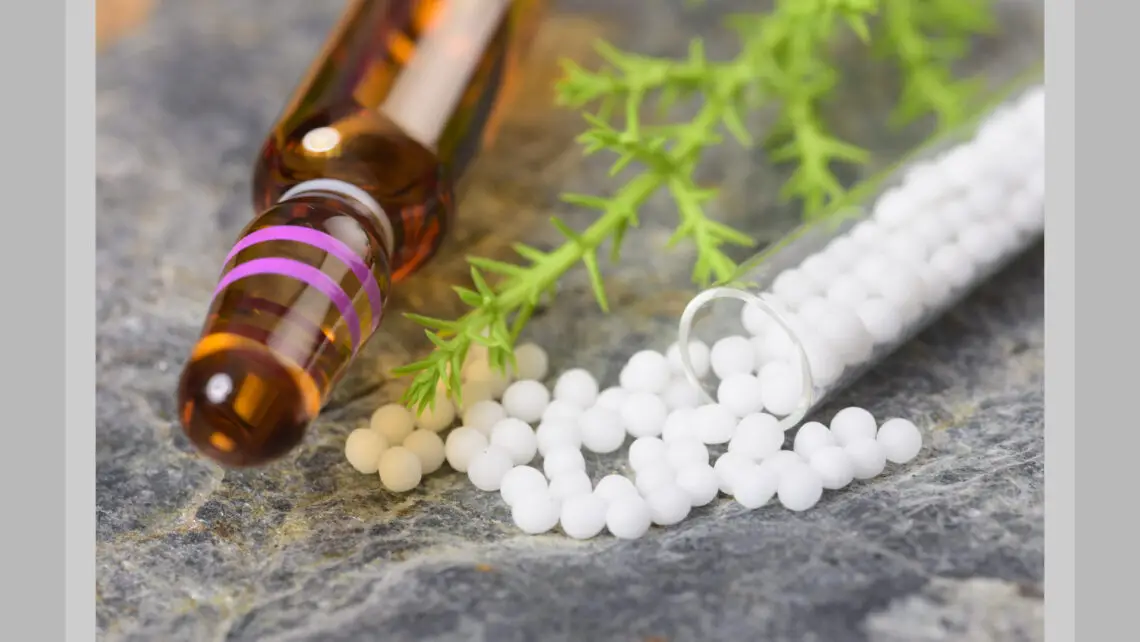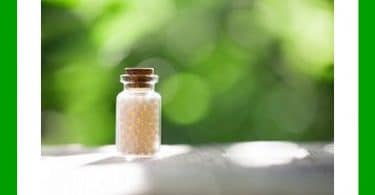As a credible alternative or complement to orthodox medicine, for many people homeopathy still has a lot to prove (no proving pun intended). The notion that an exceedingly small dose of material, homeopathically potentised or not, can ameliorate disease or its symptoms can be difficult to accept without a reasonable volume of solid evidence. Fortunately for the open-minded, good quality evidence that attests to the benefits of homeopathy exists and following are abstracts from some recent examples published in peer-reviewed journals.
Human Research
- Lobo BJ. The efficacy of Hamamelis 30 in the management of varicose veins and its complications using revised venous clinical severity score tool and peripheral venous Doppler study. J Intgr Stand Homoeopathy. 2021;4(2):49-54. A prospective uncontrolled experimental study with purposive sampling on 32 people with varicose veins was performed. The venous clinical severity score (VCSS) and Doppler test before and after treatment with homeopathic Hamamelis 30C was provided. The Wilcoxon signed-rank test was applied and the change in the median VCSS was found to be statistically significant. P-value of the pre score was 5.53 ± 4.15 and that of the post score was 3.45 ± 2.36 with a mean change of 2.09 ± 2.87 and 37.69% improvement with P-value of 0.000 < 0.01. The Doppler study showed no significant change or improvement.
- Phansalkar SK, et al. A randomized control study for evaluating the efficacy of individualized homoeopathic medicine as an adjuvant therapy in mild to moderate cases of COVID-19. J Intgr Stand Homoeopathy. 2021;4(2):40-8. This was a prospective trial of 50 confirmed COVID-19 positive cases, wherein Group A received standard treatment along with indicated homeopathic medicine (experimental group) and Group B received the standard treatment and placebo (control group). The indicated homeopathic medicine as an adjuvant reduced subjective distress in a statistically significant proportion. It also reduced oxygen requirement, shortened hospital stay, promoted early recovery, and reduced worsening of the patients and shifting into the intensive care unit (ICU). By day 4 of treatment, subjective symptoms in 56% of patients in the experimental group were completely resolved, compared to 15% in the control group. The oxygen requirement on day 4 reduced by 46.2% in the experimental group, remaining unchanged in the control group. None of the patients in the experimental group needed shifting to the ICU compared to 16.7% in the control group. The average hospital stay was 6 days in the experimental group, compared to 9 days in the control group.
- Biswas B, et al. Role of individualized homoeopathic medicine in the treatment of gout – An observational study. J Intgr Stand Homoeopathy. 2021;4:75-9. This was an observational study conducted using secondary data from hospital records, pathology reports, and the socio-demographic data from computerised records in Mahesh Bhattacharyya Homoeopathic Medical College and Hospital. 150 patients were included in the study. Gout was diagnosed based on clinical symptoms and laboratory reports. All patients were prescribed homeopathic medicines along with dietary management. The patients were prescribed Lycopodium (n=22, 14.67%), Colchicum (n=17, 11.38%), Natrum sulph (n=18, 12%) or Nitric acid (n=14, 9.38%) on the basis of totality and symptoms and individualisation. Improvement was assessed in 4 different categories: marked, moderate, mild or no improvement. The patients improved clinically as well as pathologically. Uric acid (UA) reduction was marked in 26 (17.33%) patients, moderate in 67 (44.67%) patients and mild in 25 (16.67%) patients. 83.33% of patients reported reduction in physical discomfort and continued to do well after treatment.
- Sharma B. To evaluate the role of individualized homeopathic treatment in haemorrhoids: An observational study. Int J Homoeopathic Sciences. 2019;3(3):32-4. 50 people suffering from haemorrhoids were treated with individualised homeopathy over a period of 6 months. Statistical analysis was done using SPSS software for Windows, Version 21.0. Chicago: SPSS. The data was recorded after 3rd and 6th month. The significance level was set at P<0.05. 34 patients (68%) given homeopathic Sulphur after 3 months had a reduction in bleeding, 24 patients (48%) given Sulphur had a reduction in pain, 18 patients (36%) given Sulphur had a reduction in heaviness and 25 patients (50%) given sulphur had a reduction of itching. Sulphur use after 6 months was associated with a reduction of bleeding in 38 (76%) patients, a reduction of pain in 26 (52%) patients, a reduction of heaviness in 18 (36%) patients, and a reduction of itching in 28 (56%) patients. Homeopathic Nux vomica use after 3 months was associated with a reduction of bleeding in 29 (58%) patients, a reduction of pain in 25 (50%) patients, a reduction of heaviness in 20 (40%) patients and reduction of itching in 25 (50%) patients. Nux vomica use after 6 months was associated with a reduction in bleeding in 31 (62%) patients, a reduction of pain in 28 (56%) patients, a reduction of heaviness in 20 (40%) patients and reduction of itching in 28 (56%) patients.
- Deep A, et al. Homoeopathic management of hyperuricemia in primary gout: A randomized single blind placebo controlled study. Int J Homoeopathic Sciences. 2020;4(1):73-7. A prospective study was conducted with an objective to evaluate improvement in the serum uric acid (SUA) level and visual analogous scale (VAS) score of pain after homeopathic treatment. The experimental group received the indicated homeopathic medicine while control group received identical placebo. Both groups were assessed for SUA and VAS score from baseline to end of every 3 months. Data from 91 patients were analysed at the end of study. In the medicinal group, SUA was reduced to 4.96 ±1.99 from 8.61±.69 with mean reduction of 3.66 ± 2.10 and reduction of VAS score was 1.65± 1.87 from 7.1±.83, with mean reduction of 5.46 ± 2. 00. In placebo group SUA was reduced to 7.60 ±.86 from 8.1± 69 with mean reduction of .51±.81 with VAS score reduction to 5.47±1.44 from 6.60 ±.98 with mean reduction of 1.14 ± 1.49. As per these results, the mean score reduction in the medicinal group was higher than in placebo, and the difference was statistically significant (p<.0001).
- Mohanty N, et al. Homoeopathy in the treatment of migraine: A randomized placebo-controlled clinical trial. Int J Homoeopathic Sciences. 2020;4(3):104-8. 60 people suffering from migraine headaches were treated with individualised homeopathic medicines (test group) or placebo (control group). For intensity assessment the Headache Impact Test (HIT 6) was used. HIT scores were recorded before and after treatment. The duration of the study was 6 months. The paired t-test was applied to observe the difference in groups and found statistically significant, indicating that homeopathic medicines were effective in the treatment of migraine in this study (p<0.0001). The most frequent prescribed homeopathic medicine was Natrum muriaticum. Onosmodium and Prunus spinosa were also frequently prescribed in acute conditions. Less indicated remedies were Lachesis, Sulphur, Silicea, Pulsatilla, Lycopodium, Spigelia and Sanguinaria.
In Vitro Research
- Valle AC, et al. In vitro antitumor activity in breast cancer cells (SKBR3 and PMC42) of Ruta graveolens in homeopathic dilution. J Integrated Standardized Homoeopathy. 2022;5(3):63-6. The breast cancer cell lines SKBR3 and PMC42 were treated with Ruta graveolens 35X (Ruta) and the in vitro effects on cell viability was evaluated by MTT cytotoxicity assay. In the SKBR3 cells, Ruta at a concentration of 8μl/ml induced a significant reduction in cell viability when compared to the untreated control. Treatment with Ruta 35X in the PMC42 cells reduced cell viability from the highest concentrations of 20μl/ml, 30 μl/ml, 40 μl/ml and 50 μl/ml.
- Potrich FB, et al. Highly diluted compounds effects on B16-F10 melanogenesis, reactive species production and tumorigenesis. Int J High Dilution Res. 2012;11(40):177-8. Cutaneous melanoma is a highly malignant tumour derived from skin epidermis pigment-producing melanocytes. During melanin biosynthesis and other tumourigenic process, oxygen and nitrogen reactive species are produced and might be critically involved in melanogenesis. Reactive species play key roles in the regulation of many types cell proliferation, including melanoma cells. Authors evaluated the effects of the homeopathic combinations M8 (Aconitum napellus 20X, Arsenicum album 18X,Asafoetida 20X, Calcarea carbonica 16X, Conium maculatum 17X, Ipecacuanha 13X, Phosphorus 20X, Rhus toxicodendron 17X, Silicea 20X, Sulphur 24X, Thuja occidentalis19X) and M1 (Chelidonium majus 20X, Cinnamon 20X, Echinaceae purpurea 20X, Gelsemium sempervirens 20X plus all M8 compounds) on cell proliferation, melanogenesis and reactive species. To do this, melanin content was measured in B16-F10 cells after 96 hours of treatment with highly diluted compounds, as well as superoxide anion, hydrogen peroxide and nitric oxide. Furthermore, cell proliferation was investigated by crystal violet and cell viability by trypan blue exclusion method after 48 hours of treatment. M1 and M8 treatment led to statistically significant increase in B16-F10 melanin content and a decrease in nitrite concentration, a nitric oxide derivative. Superoxide anion and hydrogen peroxide production was not changed, but a decrease in cell proliferation after treatment was observed. Nitrogen oxide (NO) is known to be involved in tumour progression. NO treated B16-F10 cells exhibited higher metastatic capacity and endogenous NO has anti-apoptotic effects. Thereby, low NO levels could account cell proliferation reduction and in vivo tumourigenesis reduction. It is speculated that melanocytes are programmed to survive in order to preserve their photo-protective role, thus in a compensatory manner the cell may synthesize melanin in response to cell proliferation reduction.
Animal Research
- Brandão ALdP, et al. Evaluation of Calcarea carbonica derivative complex (M8) on milk parameters in the dairy cow. Int J High Dilution Res. 2012;11(40):138-9. Authors investigated the response of dairy cows after M8 (Calcarea carbonica 16X, Aconitum napellus 20X, Arsenicum album 18X, Asafoetida 20X, Conium maculatum 17X, Ipecacuanha 13X, Phosphorus 20X, Rhus toxicodendron 17X, Silicea 20X, Sulphur 24X, and Thuja occidentalis19X) treatment. The study was performed as a randomised, observer double-blinded and placebo-controlled trial, with a stratified design, using lactation number and somatic cell count (SCC) as stratification factors. The study sample consisted of 42 lactating dairy cows in one high producing dairy, divided into two experimental groups. Exclusion criteria were cows with clinical mastitis or receiving any other medical treatment. Pre-and post-milking teat disinfection was practiced in the herd. All cows were clinically examined, with udder and milk samples being appraised according to Rosenberger (1990). During 3 months one group received daily M8 treatment, the other placebo. Oral administration of 5 ml/day/cow was performed using an automatic dosage dispenser. Monthly, milk production, SCC, fat and total protein content were carefully recorded for each animal by an official milk recording program. SCC was log transformed for analysis. ANOVA and Tukey test were used to compare the averages. The Bartlett test was used for homogeneity of variance evaluation. There were no significant differences (p=0.435) among the groups in the initial evaluation (values of SCC x103: Placebo 67±80; Treatment 111±153). After 3 months, the M8 treated group showed a decrease (68±47, p= 0.047) in SCC when compared with control group (392 ±687). Fat and protein did not differ between groups and time analysed. Milk production decreased in the placebo group during time (Before: 35.0 ±6.7 kg; After: 28.7 ±4.3kg), whereas the treatment group did not change total amount (Before: 28.7±6.5kg; After: 26.4 ±5.7kg; p> 0.05).
Plant Research
- Singh PK, et al. Effectiveness of homoeopathic drug Zincum metallicum 6C on plant growth of Raphanus sativus in natural environment. Int J Homoeopathic Sciences. 2020;4(3):151-4. 30 plants of Raphanus sativus received Zincum metallicum 6C (ZM) (20 drops in 1 litre of water) while 30 plants of Raphanus sativus receiving normal water. Data collection was done every day up to germination at the same time of day. After 1 week the plants were thinned leaving only 35 plants per group. After 50 days the entire plant was measured for mass, only 30 samples were included in final analysis. The mean whole plant length of group receiving ZM was 74.9 cm while the mean whole plant length of control group was 67.95 cm. the mean whole plant mass of group receiving ZM was 270.6g while the mean whole plant mass of control group was 250.57. The mean mass of root (gm) of group receiving ZM was 179.43 while the mean mass of root (gm) of control group was 162.21. The mean mass of shoot system of group receiving ZM was 88.35 while the mean mass of shoot system of control group was 35.39.





